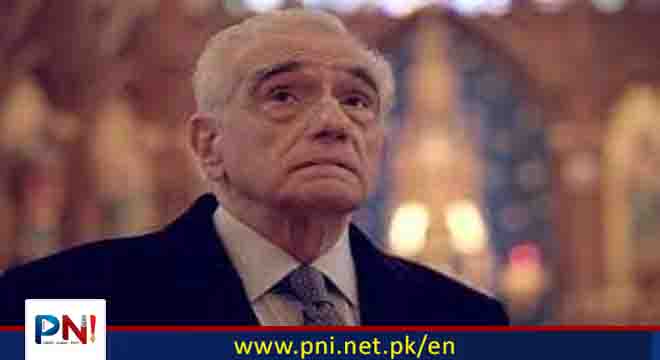Islamabad OCTOBER 09 (Online): HT interview: Martin Scorsese discusses reuniting with Leonardo DiCaprio and Robert De Niro for Killers of the Flower Moon and how Barbenheimer saved cinema.
For his second film in a row, Martin Scorsese has turned to a streaming giant in order to ‘save cinema.’ His epic Western crime drama Killers of the Flower Moon is being backed by Apple TV. But like his previous outing The Irishman, this one would too go the Netflix way but release in cinemas first.
Martin Scorsese’s next Killers of the Flower Moon released in cinemas this month
In an exclusive interview with HT, the veteran filmmaker talks about his new film adapted from a book on Osage Native Americans, reuniting with Leonardo DiCaprio and Robert De Niro and what Barbenheimer has done to save cinema. Excerpts:
It’s a lesser known fact that it was De Niro who introduced you to Leonardo DiCaprio, your new go-to leading man. Does Killers of the Flower Moon then feel like a reunion?
Yeah, they did This Boy’s Life (1993) together. Bob told me I must work with this new kid. Turned out that Leo enjoyed the movies we made. I worked with Leo on Gangs of New York (2002), then we pushed it further in The Aviator (2004). On The Aviator, we learnt that there’s a 30-year age difference! But I found that we had a similar kind of sensibility that me and Bob had. We had a similar fearlessness, the will to try things, and ultimately, a very, very strong trust. We pushed each other to different limits. It’s a gift.
You recently said that “we need to save cinema” from comic-book movies by backing individual voices. But doesn’t the success of Barbenheimer show that we’re actually getting there?
I do think that the combination of Oppenheimer and Barbie was something special. It seemed to be, I hate that word, but the perfect storm. It came about at the right time. And the most important thing is that people went to watch these in a theatre. And I think that’s wonderful.
I haven’t seen the films yet. I love Chris Nolan’s work. Margot Robbie, I must say, started with me from The Wolf of Wall Street. Rodrigo Prieto (cinematographer), after finishing Killers of the Flower Moon, went on to shoot Barbie. So it’s all in the family (laughs).
The way it fit perfectly – a film with such entertainment value, purely with the bright colours – and a film with such severity and strength, and pretty much about the danger of the end to our civilisation – you couldn’t have more opposite films to work together. It does offer some hope for a different cinema to emerge, different from what’s been happening in the last 20 years, aside from the great work being done in independent cinema.
I always get upset by that, the independent films being relegated to ‘indies.’ Films that only a certain kind of people would like. Just show them on a tiny screen somewhere.
Margot Robbie in Barbie (left) and Cillian Murphy in a still from Oppenheimer.
Following are questions and Scorsese’s answers from a round table chat that HT was also a part of:
Your first film was 56 years ago. And you’ve been making films consistently since then. What have you’re learnt about creating cinema over the years?
I learnt after Raging Bull (1980) that I’d have to start all over again every time. And that led to The King of Comedy (1982). I learnt, in a very good way, ignorance. I thought I knew, and had plans, but you never know what the nature of this organism of filmmaking is going to be.
I played with each film in a way that I could find a new way to tell the story. Sometimes, a story without a plot. I like plots, but I often find them tiresome to create. You have to find the visual and aural way to tell a story through your heart. The visuals and the sounds should reflect how you feel. And that means editing or not editing – when not to cut.
By the time I did The Wolf of Wall Street (2013), that was an intentional barrage, a provocation. By the time I did Silence (2016) and The Irishman (2019), I dealt with only the essentials. Where you make it look simple, but it’s not actually that. So you learn, but you can’t say you’re going out to learn. It happens while you’re doing it.
Is Killers of the Flower Moon the first time you’ve pivoted from your script radically while making it? Or would you have liked to pivot in any of your past films?
No, except maybe New York, New York (1977). If I had more discipline, and more control over the material, it’d have been more interesting to have pivoted and tried something new.
In Killers of the Flower Moon, I took the story described beautifully by David Grann (author of the original book), and pushed it to its limit. Eric Roth (co-writer) and I felt like it was shaping into a police procedural, which I enjoy watching, but wasn’t sure if I wanted to make it that way. I was really more taken by the Osage culture, meeting and spending time with the Osage people in Oklahoma. I got to know them as people, and it became really interesting.
Leo asked me, “Where’s the heart of the story?” I said the heart is really in the love story between Ernest (Leonardo) and Mollie (Lily Gladstone). But if we focus on that, we’d have to turn the script we’d been working on for years inside out. So it was a complete reworking of the script.
While it’s a story about America, do you feel this pivot would allow it to speak to all those around the world whose culture has been misappropriated?
Oh yes. When I saw Satyajit Ray’s film Pather Panchali on television in New York, I said, “Wait a minute! Those are the people I usually see in the background of other films. What’s the difference here?” The difference is that the film is being made by them. I’m being introduced to a new culture, a whole new life, and the universality of it all. The other films may be good, but they’re seen through the prism of outside-in. I loved The River (Jean Renoir’s 1951 American film set in Calcutta), but it’s seen through the prism of another culture.
From that point on, cinema really opened to me other cultures. I was always interested in how other people think. So for me, I wonder what it would be like to be colonised. The whole idea of America was to eliminate that. Finding the story of the Osage was to represent almost all the indigenous people of the world taken advantage of, or at least coming into conflict with overbearing civilisations of another culture. Those who have been colonised, or even pushed away completely.
Your films have been long criticised for gratuitous violence. Has your relationship with depiction of violence changed?
I’ve had this question since 1972. Well, the violence is not going to go away if you don’t watch it, if you sweep it under the rug. You’re going to be really surprised if, god forbid, it hits you. You have to know what it’s capable of. There’s another way of thinking: go back to Greek tragedy, everything happened offstage. But what was going on stage is stylistically different, and certainly for another culture or time. One doesn’t have to revel in the violence. People enjoy watching or creating violence, but not everyone does. But that’s part of the human nature. And to deny it, push it away, makes it worse.
Killers of the Flower Moon marks your 10th collaboration with Robert De Niro. Why has he been your go-to actor for the last 50 years?
Well, with Bob De Niro, it’s a formative relationship. It goes back to when we were 16 years old. But we’d lost track of each other. I didn’t know he wanted to act and he didn’t know I started directing. When we did Mean Streets (1973), we were reintroduced to each other by Brian De Palma.
By doing Mean Streets and Taxi Driver (1976) together, we found that we were drawn to the same subject matter, same psychological and emotion conflicts in people, in characters, and in ourselves. A certain trust was developed. I resisted Raging Bull for several years for certain reasons, but he really insisted that it’d be good for me.
He’s the only one alive now who knows where I come from, as kids, as young people. So the keyword is trust, fearless, and less vanity. He’s concerned about the make-up and how the character looks, but not about beauty and trying to make him look better with special lighting. He says if the camera is on my back and someone else’s face makes it look better, do that.
He was very powerful at that time, after he won the Academy Award for The Godfather II (1974). But even then, we always had the danger of the studio taking away the film from you. No such thing as the final cut for me at that point of time. Inevitably, the actor would comply with the studio.
This guy wouldn’t do that, he’s stay with you. And so I had that as a power. He was protective of me and the film.
Robert DeNiro and Martin Scorsese during Taxi Driver.
Killers of the Flower Moon is releasing first in theatres, followed by Apple TV+. Are you suggesting it’s not made for the tiny screen?
In the case of Killers of the Flower Moon, it should be seen on the big screen. Are we intending to make a blockbuster? No, we’re making a movie, which should watch on the big screen. Other pictures I made? May be not.
Sometimes, it’s the strength of the picture too, if it plays well on a smaller screen, that’s interesting. Killers could play on a small screen, but in order to truly immerse yourself, you should take out the time. People say its three hours, but come on, you can sit in front of the TV and watch something for five hours. Also, there are many people who watch theatre for 3.5 hours. There are real actors on stage, you can’t get up and walk around. You give it that respect, give cinema some respect.
Killers of the Flower Moon will release in Indian cinemas on October 27.
Follow the PNI Facebook page for the latest news and updates.








